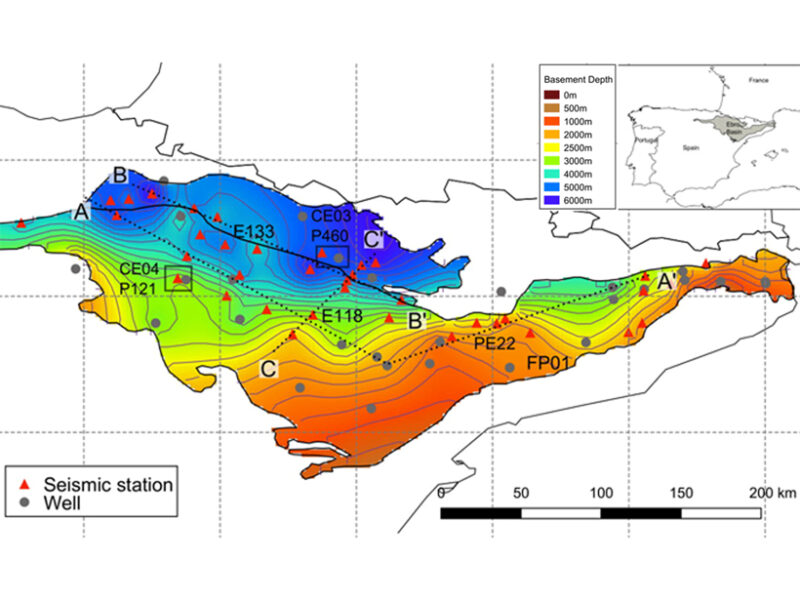
In the last 15 years, cross-correlations of ambient seismic noise have been used increasingly to reveal seismic waves propagating between seismic stations, without the need to wait for earthquakes or to set off expensive or controversial controlled sources. These waves are used in turn to study the Earth’s velocity structure, with most early applications at crustal scale. Romero and Schimmel [2018] push the technique to shallower regions by using the high frequencies that are available from examining the phases of auto-correlation functions of individual stations to find waves reflected from beneath the stations. The authors compare these reflected waves to seismic well log data to determine the depth to a complex basement structure. Such understanding will allow for more realistic determination of wave amplification that may cause increased seismic hazards when earthquake waves travel across basins.
Citation: Romero, P. and M. Schimmel. [2018], Mapping the basement of the Ebro Basin in Spain with seismic ambient noise autocorrelations, Journal of Geophysical Research: Solid Earth, 123. https://doi.org/10.1029/2018JB015498
—Martha K. Savage, Editor, JGR: Solid Earth
The post Basement Structure Mapped by Phase Autocorrelations of Noise appeared first on Eos.
from Eos https://eos.org/editor-highlights/basement-structure-mapped-by-phase-autocorrelations-of-noise?utm_source=rss&utm_medium=rss&utm_content=basement-structure-mapped-by-phase-autocorrelations-of-noise
via IFTTT

